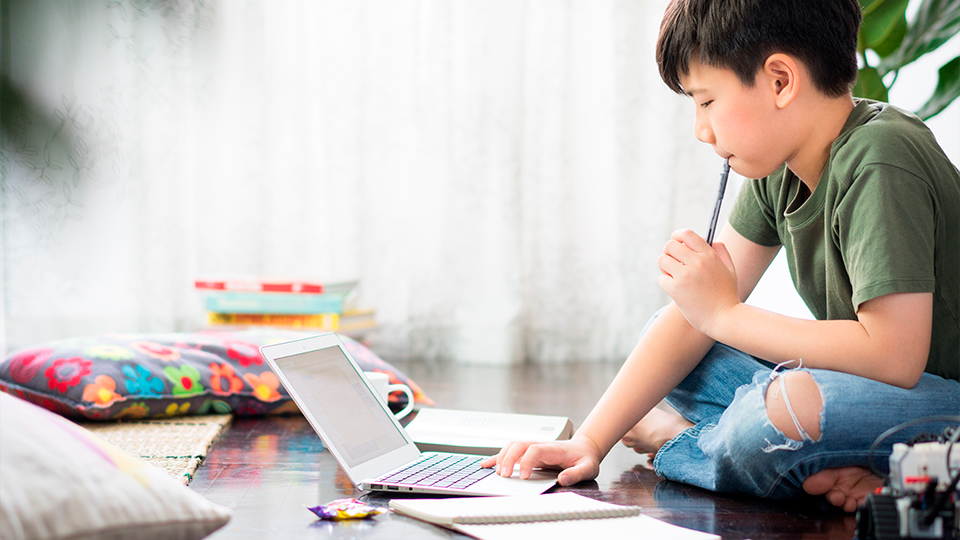Key aspects of visual development in childhood
13/11/2025

31/08/2020
This year, the start of the school year is special for everyone. Families are facing it with concern and eagerness in equal measure, and are preparing all the essentials to make the most out of the new term. However, there's a crucial item that is not always on our checklist: a visit to the ophthalmologist.
Barraquer Ophthalmology Centre ophthalmologists estimate an upturn in vision disorders among children and teenagers because of lockdown and the excessive use of electronic devices during this time. This leads to deteriorated eye health which may negatively impact school performance.
If the first visit to the ophthalmologist is usually at the age of two or three—provided the child does not have any obvious eye conditions requiring them to attend earlier and keep up annual visits therein—then this year it is more necessary than ever because of the events in recent months.
“We advise that all children and teenagers undergo an eye check-up at least once a year. The eyeball continues growing during childhood and adolescence. However, many people are unaware that the visual system develops up to the age of seven or eight approximately, as that is when us human beings have greatest neuroplasticity. This highlights the importance of correcting certain visual issues or refractive errors at an early age, as later on there will be no solution to them”, explains Dr. Ainhoa Martínez Grau, specialist in childhood ophthalmology at the Barraquer Ophthalmology Centre.
During childhood, multiple eye pathologies may occur, resulting in amblyopia, better known as lazy eye, if it is not treated in good time. Amblyopia is reduced visual capacity in one or both eyes through lack of use during the visual learning period, and is caused by multiple visual defects: refractive errors such as hypermetropia, astigmatism or myopia; strabismus, which is a loss of parallelism between the eyes; or even other eye anomalies, such as droopy eyelid (ptosis) or congenital cataracts. These are reversible problems if they are treated early. “In the case of myopia, for example, close exposure to screens for a long time and a lack of natural light, has led to an increase in this pathology, which, combined with overexertion of the eye, increases the risk of eye fatigue”, comments Martínez Grau.
“Exposing children and young people to the mobile phone, computer or tablet lowers their blinking frequency, which can lead to temporary blurred vision since the eyelid promotes homogenous tear distribution over the whole surface of the eye. The tear is the first refractive power of the eye. Another consequence of reduced blinking is eye discomfort related to eye dryness, as if we don't blink enough, part of the tear that should lubricate and oxygenate the eye evaporates, which is especially important in adolescents who, due to hormonal changes, experience alterations in the Meibomian glands, the glands that produce one of the three layers of the tear", warns the doctor.
Another characteristic of this context is stress in the face of the uncertainty of the pandemic and concern in households about the health and economic situation. In children and young people, stress may lead to an increase in the rate of eye disorders such as eye tics, which manifest as frequent blinking or winking (they do not translate to an eye pathology in the majority of cases); eyelid myokimias, which are involuntary contractions usually in the lower eyelid; and styes, which are an infection of the gland of the eyelid margin causing inflammation and pain.
And lastly, an added factor: the long lockdown period of children and adolescents closed inside without contact with the fresh air and less exposure to allergens, has led to, a posteriori, an increase in cases of allergic conjunctivitis and an increase in the intensity of the eye symptoms like stinging or red eye.
“We hope that this lockdown period serves as a turning point at which the population becomes more aware of good eye health. This involves putting yourself in the hands of doctors specialising in ophthalmology who provide eye care and check-ups on young people”, concludes Dr. Ainhoa Martínez Grau.
We chatted with our pediatric optometrist Susana Escalera, who sees about 30 children a day in her office. Her experience and skills are paramount to a successfult eye exam of these small patients, some of whom are still a baby. It seems like a simple task, but it is not.